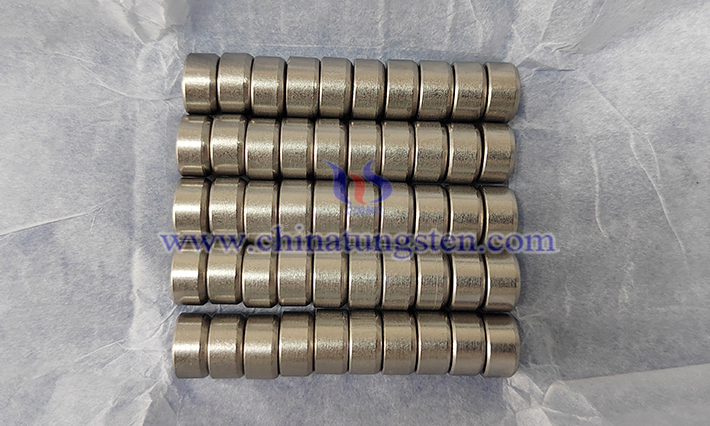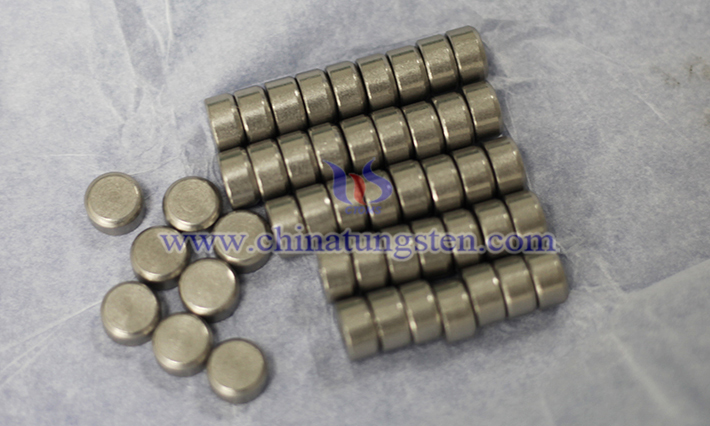Effect of Heat Treatment on Barium Tungsten Electrode Performance
- Details
- Category: Tungsten Information
- Published on Friday, 06 June 2025 18:36
The optimization of the performance of barium tungsten electrode by heat treatment is a complex process, involving a comprehensive balance of microstructure, emission performance, mechanical properties and chemical stability. By precisely controlling heat treatment parameters (such as temperature, time, atmosphere and cooling rate), the electron emission efficiency, mechanical strength and service life of barium tungsten electrode can be significantly improved. The specific process needs to be customized according to the application scenario of the electrode (such as high temperature environment or high current density).

1. Microstructure and Organizational Changes
Heat treatment can change the microstructure of barium tungsten electrode, including grain size, phase distribution and defect state, by controlling temperature, holding time and cooling rate:
Grain size: Appropriate heat treatment (such as annealing) can promote grain growth, reduce grain boundary defects and improve the mechanical stability of the electrode. However, excessively high temperature may cause excessively large grains and reduce strength.
Phase distribution: Heat treatment can optimize the distribution of barium (Ba) in the tungsten (W) matrix, promote the uniform distribution of active materials (such as barium oxide or barium compounds), and improve emission performance.
Defect control: Heat treatment can reduce intracrystalline defects (such as dislocations and point defects), improve the conductivity and thermal stability of the electrode.
2. Emission Performance
Barium tungsten electrodes are mainly used for hot cathode emission, and heat treatment has a significant effect on their electron emission performance:
Work function reduction: Heat treatment can promote the diffusion of barium atoms to the surface, forming an emission layer with a low work function and improving the efficiency of hot electron emission. For example, an appropriate annealing temperature can form a stable single atomic layer of barium on the surface.
Surface activity: Heat treatment can remove surface impurities (such as oxides or carbides), improve surface cleanliness, and enhance emission stability.
Emission uniformity: Optimizing the distribution of barium through heat treatment can reduce the non-uniformity of emission points and extend the life of the electrode.

3. Mechanical Properties
Heat treatment also has an important influence on the mechanical properties of barium tungsten electrodes:
Thermal shock resistance: Appropriate heat treatment can relieve internal stress, improve the thermal shock resistance of the electrode under high temperature cycles, and reduce cracking or peeling.
Hardness and toughness: Annealing can reduce the hardness of the material and improve toughness, while processes such as quenching may increase hardness but reduce ductility. It is necessary to select a suitable heat treatment process according to the specific application.
4. Chemical Stability and Life
Oxidation resistance: Heat treatment (such as in a vacuum or inert atmosphere) can reduce the formation of oxides on the surface of the barium tungsten electrode and extend its service life.
Barium volatilization control: Excessive heat treatment temperature may cause barium volatilization and reduce the long-term emission performance of the electrode. Therefore, the heat treatment temperature and time need to be precisely controlled to balance the diffusion and retention of barium.
Anti-poisoning ability: Heat treatment can optimize the surface chemical state and reduce the sensitivity of the electrode to residual gases (such as oxygen or water vapor) in the environment, thereby improving the anti-poisoning ability.
- Chinatungsten Online: www.tungsten.com.cn
- CTIA GROUP LTD: en.ctia.group
- Tungsten News & Price: www.ctia.com.cn
- Molybdenum News & Price: news.molybdenum.com.cn
- Tel.: 86 592 5129696; Email: sales@chinatungsten.com



 sales@chinatungsten.com
sales@chinatungsten.com